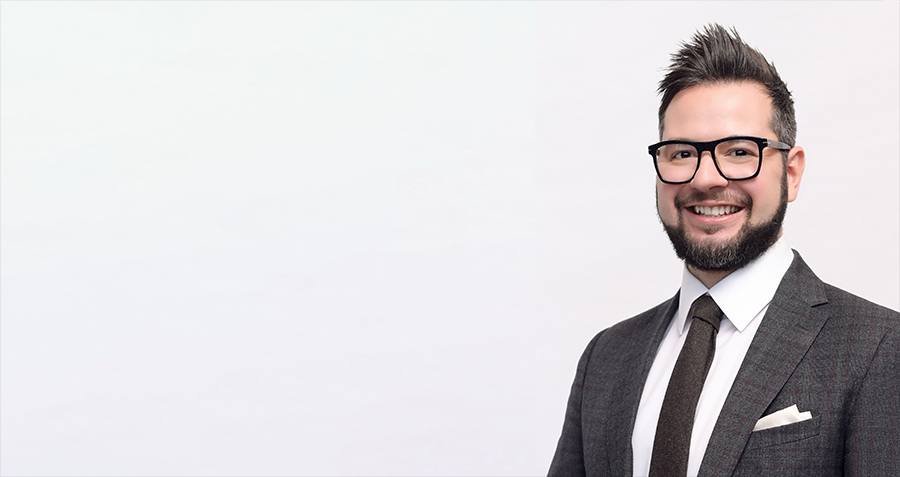On 22 February 2024, Gao Feng Advisory Company’s CEO and CKGSB Professor of Managerial Practice of Strategy, Edward Tse interviewed Patrick Kaminski, (Managing Director China Sebapharma). With over 20 years of experience leading several major Western multinational corporations in China, Patrick shared with Ed his first-hand experience of how to do it right in China for consumer-facing companies. He discussed Chinese companies’ and consumers’ fast adaptation and change, Chinese innovations and the incredible competition that is happening in the Chinese consumer market.
Edward Tse (hereinafter Ed): Hello, Patrick. How are you? It’s been a while since we’ve seen each other. Are you in Shanghai?
Patrick Kaminski (hereinafter Patrick): Yes, I’m in Shanghai – sitting in our new office here, close to the Bund.
Ed: We’ve known each other for more than 10 years. When we first met, you were head of Asia Pacific for Henkel and also responsible for the entire set of emerging markets for Henkel, could you give us a brief summary so far?
Patrick: That’s correct. Then, I was president for Henkel in the Asia Pacific region, including China. Later on, I became responsible for all emerging markets or growth markets at that time, which stretched across the southern hemisphere and also included Russia and the CIS. Although Russia is somewhat politically isolated now, it was very much open back then. Henkel then already had a global presence then. It transferred management responsibilities and operations from its global headquarters in Germany to Shanghai for all those growth markets. That was a significant transformation for a company like Henkel. Looking back, I would say that was a significant moment because the entire global cooperation changed its structure, which doesn’t happen so often.
I left Henkel for Beiersdorf, where I became a board member for the Far East region, also based in Shanghai. Mostly I’ve focused on the consumer sector throughout my professional career, working with different brands from different industries. Though I widened my perspective significantly by running my own company in the food tech, organic tech, health tech and areas in Hong Kong.
Ed: Since you set first foot in China, when you look at the consumer in China then, today and projected into the future, how would you categorize them? Chinese consumers have made a lot of progress – how would you describe the progress?
Patrick: If I were to compare Western consumers to Chinese consumers from when I came 20 years ago to today, I would have said they have flipped completely. In the early 2000s, the Chinese consumer was not necessarily demanding. They didn’t know much. They were not emancipated in terms of their own demands, wishes, requests or even tastes. They were learning like sponges in a positive way, largely influenced by Western brands, and what those brands told them. Penetration rates were low. But this has flipped completely. The Chinese consumer has become very emancipated, very aware of themselves. You can’t dominate them anymore with alien ideas, and I mean alien ideas for a positive way. They know what they want and need. Penetration rates are not yet as high as in the West, but high enough to justify that they get their own products and have their own wishes fulfilled.
Now, if you look at consumers in the West, they got dominated by manufacturers. Yes, there are high penetration rates, but they buy all the same things, because they get offered all the same things. In China, though, the variety of offers is just mind-blowing. This isn’t because manufacturers want to offer this, but because consumers demand it, and they do consume. The variety is mind-blowing because the variety of wishes and individuality is so much higher. The quality is top-notch, not only in industrial fields but especially in my field. The quality of consumer goods is stunning.
In my old corporate life, and now my new corporate life, I always invited the owners and the management boards to come here and see. We just had a visit from our CEO and other executives. I invited them to spend a week in Shanghai and only commute by subway and bicycle. They were speechless. They said we couldn’t have imagined what we saw. Usually, if come here and rent a car or use Didi or whatever, you see the same car inside; you see nothing. But if you are with the people here, you don’t need to speak their language. These people were intelligent and experienced enough to understand what they saw, and they were speechless-and theses are intelligent, experienced people! I say, if you want to see the future, then come to China!
Ed: What should companies do to capture this huge demand?
Patrick: That’s a complex question – one question that could elicit a hundred different responses. First, companies – whether they are Chinese domestic companies or international companies – should come and watch and understand what I refer to as “product-focused business models”. The days when you could produce something and then try to sell it are over. In China, you need to see what consumers want. And sometimes, you can see a want which is unfulfilled. And this isn’t just about seeing, it’s about understanding too. There are tools which help you understand besides just looking around. Digitalization is so high that you can really understand fulfilled and unfulfilled needs through social media, through social listening and other similar tools. If you develop products, application, services, or whatever that meet these needs, you will be successful. If we as companies say we are specialists in one product and we just sell that one product, we are bound to fail. This is where you can draw the line between successful companies and unsuccessful ones. In China, those who understand people’s rapidly changing needs will be successful, while those who are still in the economy 1.0, they will fail, and they will fail faster than they used to fail in the past.
Ed: We’ve talked about the consumer – about the demand side. What about the supply side? One of the phenomena that surprises many Western multinational companies is the emergence of the Chinese competitors. You’ve been in China for a long time, so I’m sure you have witnessed the emergence of Chinese competitors. They’ve come from almost nowhere to becoming very capable competitors against the Western multinationals in a lot of sectors. How do you see them?
Patrick: What happened in the past was initially the multinational companies dominated the field we are talking about – the consumer sectors. They offered better products. They knew manufacturing better. They had clever marketing strategies. So, at that time, the local competitors were basically limited to the cheap end of the market.
And that’s what the global companies got it wrong – thinking they couldn’t compete on price with local businesses. But over the years and decades, global companies lost focus on what local companies were doing. They thought these guys were doing cheap stuff and so weren’t real competitors. But as the Chinese companies needed to compete with each other in the cheap segments of the market, they were very much more on attuned to what consumer’s needs. They starting to listen as they developed their products. They knew that if everyone was cheap, you needed to find a different edge. So they began to develop methods to understand Chinese consumers better, not because they were Chinese companies, but because they had a different focus from the multinationals.
So if we now use the new term “consumer-centric company”, this is what the Chinese companies have done already, starting 10 or 20 years ago. Over time they become big, and obviously they became experts in Chinese consumers. Multinational companies lost here – they didn’t even focus on it.
Then these Chinese companies started to target higher price segments, even the luxury segments. It’s no secret that today we are competing with them. I’ll give you a concrete example: with our brand we are competing in the medical skin care or derma skin care market. 10 or 15 years ago, this was a niche market. But in the last four years it’s grown around 11 or 12 times, so it’s now a multi-billion-US dollar market. All the brands entered and stayed in, but they didn’t really focus on it. So a local competitor, Winona薇诺娜, is now by far the market leader. And guess what? Its average price is above all the competition, making it an expensive brand, yet it offers great quality, extensive market coverage, and is very close to consumers. This is a brand which didn’t even exist 10 years or 15 years ago! And now, suddenly, all the multinational companies are watching it like a rabbit watches a snake. And the second biggest player is another local brand, Dr. Yu玉泽. This is a very different world! These are local brands that aren’t competing by being cheap. They are not leading in marketing and execution but they have completely changed the race, becoming the top runners over the last few years.
Ed: How can Western multinational companies compete with the Chinese companies?
Patrick: Three things are fundamental for multinational companies to achieve success in China, and so far, almost all of them have struggled with one or another of these. One is speed to market. One is consumer focus, what we call having a consumer-centric business model, not being production centric or product-centric or channel centric. And the third, maybe the most important, is having trust in your local organization. Without that – if you always have to relay everything back to your headquarters out of China – you lose focus, proximity to the market, and competitiveness in terms of speed.
These three are, for me, the key success factors, but they are also where multinational or other non-Chinese companies struggle the most. If they want to realize these goals, they have to make structural changes in their companies. These aren’t tasks you can delegate; you also need to change. You need to transform the company to be able to address all these aspects effectively in China.
Ed: But non-Chinese companies headquartered outside China have concerns too. If they empower their local team to have full decision-making rights, they might feel they don’t control everything. How can that be addressed?
Patrick: Now, for the third time in 30 years, I’m working for a German family-owned company. Just taking German companies as an example, wherever they are active, they want to understand everything before they act. They seek some certainty and security. Now if you’re a German company in China and you want to understand China in every detail before you act, you will never do anything. It’s impossible. What you need to do is find someone – best of all, someone Chinese – who understands China and let them give you, say, the top 10 points that can help you be successful in the market.
Here, trust comes in. You need to have someone you can trust enough because you can’t understand everything. This is where German and other international companies struggle. If you need to understand everything before you act, nothing is going to happen. It’s not only your speed and your execution, what you need is to have sufficient decision-making power here. Your headquarters can transfer values and guidelines. Then, based on that framework, you can execute things in China in a China-relevant way.
Sometimes this leads to a painful or long-winded discussion between the two sides. Where does our strategy end? Where do the guidelines end? Where does execution start? What does it mean to be China-relevant? But this is all part of the learning curve, and the steeper the curve, the sooner it can be successful.
Ed: If you read the news about doing business in China from the mainstream media, the narrative is usually about how the China market is difficult – that it’s an unlevel playing field where Western and other non-Chinese companies are treated unfairly and so can’t do well in China. But what you are saying is that the problems and challenges often come from within companies. The issue of speed you talk about is a manifestation of institutional capability or the lack of it, and trust is certainly an internal issue. So would you agree that the real reason for many non-Chinese companies not achieving their goals a lot of the time stems from internal factors, especially related to their headquarters?
Patrick: I agree completely, especially when it comes to my industry. The narrative is driven by two things. In terms of communication, it’s always more appealing to focus on something negative rather than positive. And in terms of companies, you’re better have a long list of excuses if something goes wrong. But if you look at the reality here, where I’ve guided three companies to success, you’ll see that these are just excuses. Of course, if you’re resistant to making internal changes and then find yourself unsuccessful, you’ll need something to blame. So, naturally, external factors become the go-to scapegoat.
Ed: One thing I’ve observed about you which is quite different from many other non-Chinese managers in China is that you’ve embedded yourself into the fabric of Chinese society. You’ve got to know your customers, you work with partners, you work with your staff. But at many other non-Chinese companies, the executives work and live within the capsule of their office and the home. If they attend social events, it’s in places like the American Chamber of Commerce or the European Chamber of Commerce. They’re always part of the same small group of people talking to one another, and so their information sources are limited. Even though physically they are in China, their information and knowledge of China is restricted. But in your case, you’ve embedded yourself into society. I couldn’t imagine you absorbing a lot of this development in China without this osmosis with real people here.
Patrick: I think your observation is spot on. I’ve tried to do that since I arrived in China. I don’t have a company driver or a company car, nor do I have a personal assistant. I take the subway, ride a bicycle, or walk. I go to lunch with members of my team every day in Chinese restaurants. And I use Chinese apps for online shopping. One reason is because there’s simply no alternative, and even though I’m not fluent in Chinese and for sure I can’t read, if I don’t do this, I won’t understand anything. I know I can never understand China in total, but at least I get the touch points – I see how people commute, where they go, and what they have to do on the mobile phones, because mobile phones are reality in China! Some companies still advertise on TV – I say forget that! Even websites aren’t as relevant. The reality today is mobile phones and their many apps, everything is there.
If I were to give my phone to my assistant and ask them to order things for me, I wouldn’t be able to understand the touch points. Of course, I’m not able to understand everything that’s behind the touch point – that’s what I have a team for. But I need to be able see the touch point. That’s also why I integrated my company’s team with the distributor’s team. We don’t have doors separating us. Now, you could argue that you shouldn’t be doing this because you’re the manufacturer and they’re your client. But I want to understand their world by seeing it every day. What problems do they have? When does such and such a company get excited? What happens if they are challenged? What happens during the double eleven shopping festival when they sit here till five o’clock in the morning? If we’re here, we can observe what they do. But if you don’t understand the touch points, because you say “I don’t speak Chinese” or “I don’t want to visit them” or “I don’t like Chinese food”, then you’ll be nothing more than a figurehead. This is probably true in all markets around the world, especially emerging markets. You need to do the same thing in Indonesia or in India.
Depending on the stage a country is at, doing this can be very painful and exhausting. But if you want to be successful as a foreigner, you have to do this. Otherwise, you will never truly understand the market you’re in. Does it come with frustration? Yes, sometimes.
Ed: About 20 years ago, a lot of people called China a copycat nation. Today, however, most people would call China a very innovative nation, including in your field. How would you categorize Chinese innovation? What kind of innovation are Chinese companies good at? How do you see them going forward in terms of their innovation capabilities?
Patrick: As I mentioned earlier, I see more and more advancements here. Probably I’m biased because I enjoying living and working here both professionally and privately. But I truly think that in a lot of industries, China has already overtaken whoever in the world was the innovator before. If you want a glimpse of what the future holds in other parts of the world, you have to come here. In terms of society, cities, sustainability, consumer goods, it’s already happening.
What’s Chinese about the innovation here is how they’ve transformed industries, which traditionally from a Western view were not consumer-driven into consumer-centric ones. Previously, there were no consumers. They’ve turned that into an advantage by being in touch with everyone. They use humongous systems of what we call CRM to gain intimate insights into consumer behavior. They know their individual consumers down to the individual level and use this knowledge to make entire industries consumer-driven.
Look at the automotive sector. In China, automotive, it’s a consumer driven industry. In the West, it’s manufacturer-driven. In China, they’ve built a whole industry around offering vehicles for passengers, not offering cars for drivers. Almost nobody in China enjoys driving; there are traffic jams, and the roads aren’t perfect. So the cars they build are optimized for passengers, tailored to their needs and demands and wishes. This makes it possible for people to enjoy sitting in a car and commuting, even in a traffic jam. Nobody cares much about the driving experience!
Also, the cars aren’t so expensive that a family goes bankrupt or has to take out a 15-year loan to buy one, unlike in the West. This transformation has been ignored in the West, where car manufacturers still push vehicles for drivers, boasting features like: “Our car has 500 horsepower.”
If you’re a Western luxury brand you can still say “Everybody loves driving” and find some successful. But even then, you’ll probably only sell about 5 percent of what you did before, because all the other car sales in China will be from a consumer perspective, offering cheaper cars optimized for passengers.
Another example is very close to here on Nanjing Road. As I mentioned earlier, we had some visitors from Germany here for a week. On Nanjing Road, you have a big crossing with a Huawei shop on one side and an Apple store on the other. This is direct competition! I took our visitors to the Apple shop first. It’s very similar to any Apple shop in the US or Germany. That’s because Apple is very standardized – you get the same products here as in the rest of the worldlike laptops, iPads, iPhones, and earphones. So then we walked over the crossing walked into the Huawei shop. Here, you have the laptops, the tablets, the earphones, and then you have a corner with household equipment – AI-driven vacuum cleaners, kitchen machines, and so on, all priced as consumer goods and sold to the same consumer who buys a mobile phone. And then, one level up, they sell cars. Our visitors were speechless because they now understood that we had walked into a flagship store for consumers where this company sells kitchen equipment and cars, because these are consumer goods in China, not something you have to drive 20 kilometers out of town to a car dealer to buy.
That’s a significant difference between Apple and Huawei. Apple is a successful company, don’t get me wrong. I love it, and they do well in China. Could they do better or worse? I’m not judging. But what the Chinese have done is innovate on such a big scale that they’ve turned whole industries into consumer-driven industries. That’s a very promising approach. It has not happened in the rest of the world yet. But it will happen.
Ed: That’s a great observation, Patrick. As a global executive, I’m sure you would agree that we’re entering a new world. The world we used to live in where globalization and collaboration across borders were big themes seems to have gone. Now, we’re entering a world where there’s a lot more conflict, though also in some cases where there’s more collaboration. In this new world, what will be the role of China for multinationals and non-Chinese companies?
Patrick: I agree with your observation. China’s role is being influenced by geopolitical events, and though I’m not going to discuss or judge them, I will say China is being forced to take a stronger leadership role at an earlier point than maybe it had envisioned.
By a leadership role, I don’t mean occupying or dominating other countries, but stepping up to the role it has already. Now, a significant share of world economies looks up to China to and expects it to lead. So it will be positively forced to take that leadership role seriously and lead those nations in terms of transformation.
Automotive is an example here. If you isolate yourself and block Chinese cars from entering your market, you’ll miss out on the transformation and innovation occurring here. But if you open up – and a lot of nations are doing that for Chinese cars – then you can leapfrog on what the Chinese have done over two decades and you can do it maybe in five years. This will give you a fantastic growth dynamic and a fantastic step forward, creating growth, jobs, and innovation. You’ll be able to grow your own industries, your own service industry, your own application industries, your own IT industry, your own AI industry and so on.
If you allow these injections of innovation, from a pure economic standpoint, you won’t lose anything. This has nothing to do with becoming dependent on China, it’s about leveraging these advancements for mutual benefit. Then you can ride on them as a nation. And that’s what’s going to happen. We see a polarization of the world between the West and its friends and the Global South and its friends. The ties will strengthen on both sides, so this innovation from China will be injected into some countries and not by others. So the dynamic of growth and the speed of innovation will separate these two parts of the world.
Ed: The tentative title of my new book is “China: The indispensable nation.” Would you agree with that title? Does it convey the right message about China?
Patrick: I think that’s exactly right. It’s not only the title of your book, it’s the title for China. It’s an indispensable nation already and will be even more so in the future.
Ed: Could you talk a little bit more about what you see as the forces driving innovation in China and making all these things happen.
Patrick: China’s approach is somewhat unique compared to other nations. Because policy-wise, they support an internal focus not just with words but also with subsidies. Every country does that, but China has a deliberate plan when to do what and how to do it. It’s very reliable with its five-year plans. These are top-down policies which companies can rely on to do what they say. So to take one example, China has committed to becoming a global leader in AI and has pledged to establish AI hubs in six to eight cities. If you are a company in this field, you know that they’re going to do that, so you can move to one of those cities, register there and can enjoy support there. And because they’re going to do that, there’s no uncertainty there. This creates a great field for innovation, but it also leads to a high dynamic, because you can rely on it – you know it will be there for the next five years.
This makes speed a necessity. A lot of people on the manufacturing startup service side moves fast. They want to get things out there. Consumers are used to speed on the receiving side. They are used to new things and innovations. They get bored very easily. So you have to come up with a bigger thing. If you just stick to what you did before, people will just walk away.
An example here is comparing the building of Beijing’s new Daxing Airport and Berlin Airport. They are both airports of capital cities, both are subsidized by the state, and both handle more or less the same number of passengers. But while Germany took 14 years to build its airport, China wrapped it up in just 4 years. This matters, because if you want to do business in China as a construction company or as someone who sells equipment or roof tiles or glass panels or cables or glue for the carpet or anything, then you have to be able to move fast. If you are a German company used to a development cycle of 14 years, you can’t participate even if you have a great product because in China you have to be ready to do it in 4 years. This is not something where the top management can say “Yes, we’ll do it.” If you don’t have the infrastructure, capacity, supply chain speed, or decision-making timing, you can’t make it happen. So, a fundamental decision that companies must make is whether they want to do business in a market where speed is of the essence? That challenges many companies, and the bigger the company, the greater the challenge.
Ed: Are there any multinational companies which you think are getting this right – examples that people should be looking at and studying?
Patrick: I’m shocked at how few companies actually get it right. The knowledge is there, and so is the experience – it comes back to internal matters. Are you ready to change? Or are you not ready to change? If you are not ready to change, then no matter how much you know, you will fail. It’s like you buying a book and reading it, but if you’re not able and not willing to change, then it doesn’t matter what you know. So many of those companies don’t change and then fail. This is shocking! You have examples here in my industry.
Of course, you also have Procter & Gamble and L’Oréal, which are hugely successful in China. But they have been here for 40 years, and nobody knows or remembers whether they had problems in the beginning or not, because they were too big to fail. But if you look at them and dissect what they are doing in China, they are putting their China knowledge to work. But they didn’t do that on day one. Their success has taken many decades in China, and there are a lot of similarly sized companies that never made it in China and never will.
Ed: One last question: what are the big challenges that lie ahead for Chinese companies?
Patrick: Domestically, they face all the same challenges as multinational companies. What puts them under even bigger pressure is that they are competing head on with their domestic competitors, which we, depending on the brand or the portfolio we are selling, are not necessarily doing. We are not in the hottest part of the market, but they are. If you speak of the “red ocean,” they are in the middle of it. That means they are under pressure in terms of innovation speed, innovation quality – even more so than us.
Much of this also comes back to challenges in terms of the talent pool and expertise available to them, in terms of expertise. This is a talent pool that has to be built starting from schools, universities, and experience. Local companies face a lot of challenges here which we take for granted in terms of human resources.
And then, just as we have the challenge of being successful in China, they have faced the challenge of being successful outside of China, which remains a huge challenge for them.
Ed: Thank you, Patrick. Very good to talk with you.
Patrick: The same here. Thank you, Ed.
The original article was published on Gao Feng Advisory Company Limited’s Wechat account.






















